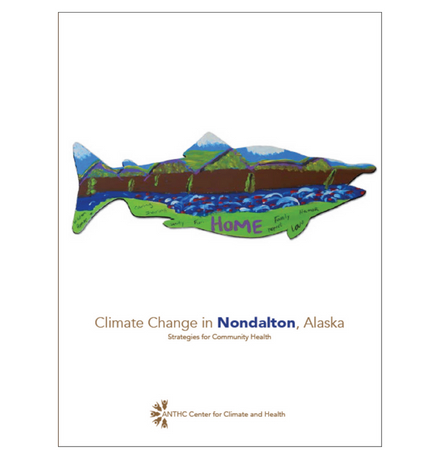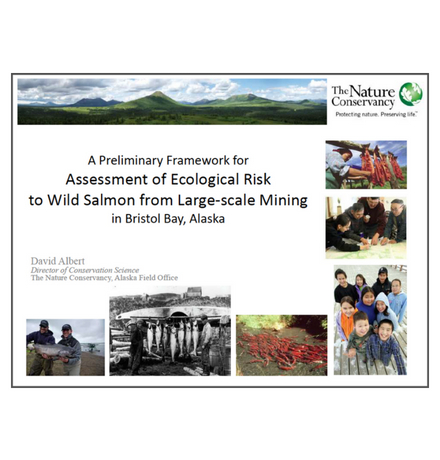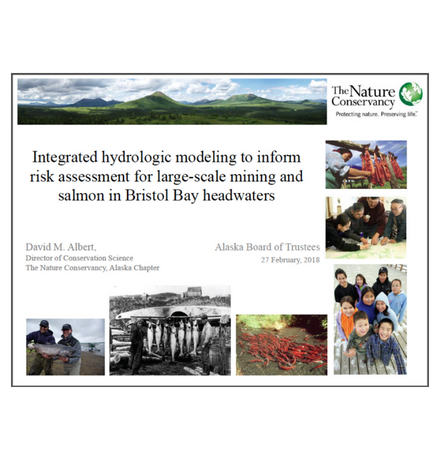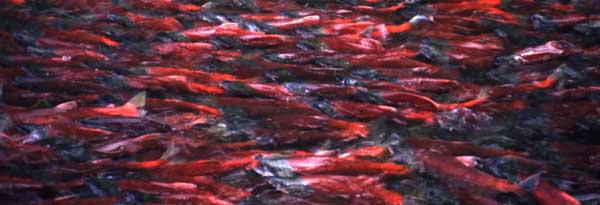Technical Background
Prepared by Dr. Robert Moran, Michael-Moran Assoc., LLC
The proposed Pebble Mine is in the exploration phase, therefore, detailed, technical information on the extent of mining, extraction processes, facilities locations, etc. are not public. As with similar projects, details will change frequently throughout the life of the project.
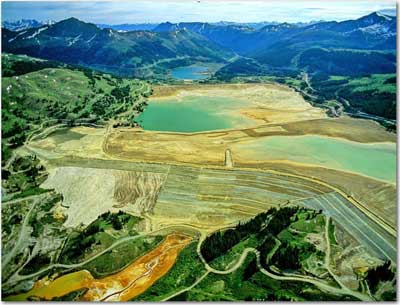 |
| Climax Molybdenum Mine, Colorado. Operated as both open pit and underground facilities. Mine footprint is about 14,000 acres. Facilities have contaminated three rivers. About 3.2 billion gallons of contaminated water must be treated annually at a cost of about $4 million. (click on image for larger view) |
WHAT WE KNOW
The Pebble deposit is being explored by the Pebble Limited Partnership (PLP). The PLP is an Alaska limited partnership formed between a wholly owned US subsidiary of London-based Anglo-American PLC and a wholly owned entity of Vancouver-based Northern Dynasty Minerals (NDM) Ltd. Kennecott, an affiliate of Rio Tinto PLC, a London-based corporation, currently holds a 20% interest in Northern Dynasty.
- The proposed Pebble Mine would be one of the largest in the world.
- The proposed Pebble Mine would excavate a metallic sulfide ore deposit; the principle commercial products would be copper, molybdenum, gold, some silver, and possibly palladium and rhenium. Similar copper deposits around the world often yield additional metal products such as selenium, mercury and uranium.
- Pebble would be the largest mine in Alaska. The Pebble property covers 153 square miles of State land, of which at least 15 square miles would be required for the mine operation and tailings ponds.1
- Both open pit and underground mining techniques would likely be used.
- The Pebble Mine operational life could exceed 100 years.
- PLP has identified as much as 10.78 billion tons of ore.
- PLP proposed earthen dams for tailings impoundments up to 740 feet high. The tallest U.S. water dam is 754 feet high.
- The estimated depth of the open pit to be excavated is 1,700 feet – deep enough to swallow the Empire State Building, which measures a mere 1,453 feet.
 |
Stream polluted by acid mine drainage from
the abandoned Leviathan copper mine, Sierra Nevada
mountains, California. Photo by G. Miller (click on image for larger view) |
- The Pebble Mine would be upgradient of Bristol Bay, the largest wild sockeye salmon fishery in the world.
- The approximately 100-mile haul road from the proposed port to the Pebble Mine would cross numerous salmon-spawning streams. Roads can pose hazards to salmon by blocking migration and depositing toxic chemicals from de-icing, oil leaks, herbicides, and accidents.
- The region has a history of severe earthquakes, with several reported to have Richter magnitudes of 7.0 or greater. Man-made structures must be designed to withstand such extreme forces, even on ground that is usually water-saturated or may, in places, contain partial permafrost.
- This is a wet area, with average precipitation of 35-40 inches per year.
- Global climate changes must be considered when developing appropriate, conservative assumptions and related predictions concerning flooding, recharge and sizing of diversion structures for facilities that must last forever.
- Harmful contaminants would remain after the mine is closed.
- After processing, 99 percent of this mined rock would remain as waste to be stored on-site forever.
- Much of this waste has the potential to discharge contaminants—especially over the long-term.
- There is potential to form acid drainage. Such drainage can persist for thousands of years and allow contaminants to move off-site.
Technical Background Fact Sheet (pdf file 253 kb)
Moran, R. 2007. Pebble hydrogeology and geochemistry
issues. Available at http://www.pebblescience.org
1 The area of 153 square miles (98,000 acres) is used
in Northern Dynasty Minerals 2007 Technical Report.
Area required for tailings and mine site is calculated
as the sum of information in Northern Dynasty Mines,
Inc. 2006, Tailings Impoundment G Initial Application
Report (Ref No VA101-176/16-12) and Tailings
Impoundment A Initial Application Report (Ref No
VA101-176/16-13).
Tailings applications available at http://dnr.alaska.gov/mlw/mining/largemine/pebble/water-right-apps/index.cfm
|

